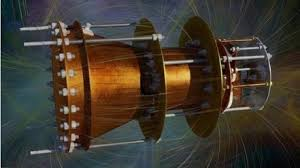
Breaking News
 Why Dual Engine Failure Changes Everything -- Louisville Crash Update
Why Dual Engine Failure Changes Everything -- Louisville Crash Update
 Transforming Storage Shelf / Workbench - Small Space Organization
Transforming Storage Shelf / Workbench - Small Space Organization
 Our 3-Step Strategy for a Stress-Free Pantry
Our 3-Step Strategy for a Stress-Free Pantry
 BEHIND THE DEEP STATE | The War on Farms
BEHIND THE DEEP STATE | The War on Farms
Top Tech News
 HUGE 32kWh LiFePO4 DIY Battery w/ 628Ah Cells! 90 Minute Build
HUGE 32kWh LiFePO4 DIY Battery w/ 628Ah Cells! 90 Minute Build
 What Has Bitcoin Become 17 Years After Satoshi Nakamoto Published The Whitepaper?
What Has Bitcoin Become 17 Years After Satoshi Nakamoto Published The Whitepaper?
 Japan just injected artificial blood into a human. No blood type needed. No refrigeration.
Japan just injected artificial blood into a human. No blood type needed. No refrigeration.
 The 6 Best LLM Tools To Run Models Locally
The 6 Best LLM Tools To Run Models Locally
 Testing My First Sodium-Ion Solar Battery
Testing My First Sodium-Ion Solar Battery
 A man once paralyzed from the waist down now stands on his own, not with machines or wires,...
A man once paralyzed from the waist down now stands on his own, not with machines or wires,...
 Review: Thumb-sized thermal camera turns your phone into a smart tool
Review: Thumb-sized thermal camera turns your phone into a smart tool
 Army To Bring Nuclear Microreactors To Its Bases By 2028
Army To Bring Nuclear Microreactors To Its Bases By 2028
 Nissan Says It's On Track For Solid-State Batteries That Double EV Range By 2028
Nissan Says It's On Track For Solid-State Batteries That Double EV Range By 2028
OPINION: EmDrive: the future of travel or a technological long shot?

Understandably, the scientific community (and the pseudo-scientific online community) leapt onto Shawyer's designs with quite a bit of rancor.
This is because Shawyer's designs are in clear and direct violation of Newton's third law: there is an action (the microwaves pushing their vehicle forward) without any form of pushback that didn't come from the public outcry against his design. Note that although I am personally incredibly excited for the EmDrive and its potential, I have stayed away from calling Shawyer's design for the drive an invention because despite its promising math and more-than-promising tests, Shawyer's drive is still that — a promise.
A promise that NASA itself has decided to back by inducting the EmDrive into its Advanced Propulsion Physics Laboratory, nicknamed Eagleworks by the physicists stationed there, whose entire purpose is to research strange methods of spacecraft propulsion.
The EmDrive was reconstructed and tested by NASA's Eagleworks in November 2015, and it found the machine produced thrust. They repeated the tests again, with equipment designed to correct for any tremors and once again, the results were in Shawyer's favor.

 Carbon based computers that run on iron
Carbon based computers that run on iron

